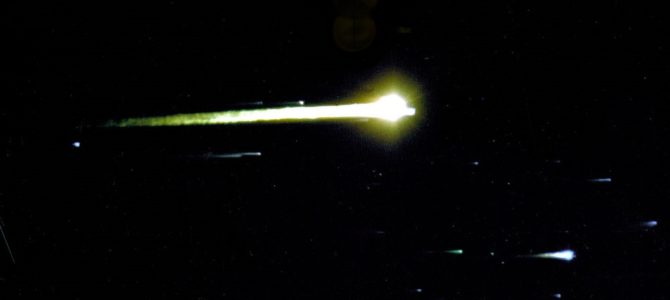
Today marks the fiftieth anniversary of Apollo 8’s launch aboard a massive Saturn V rocket. Three days later, three astronauts aboard became the first humans to orbit the moon. Their spacecraft comprised a Command Module that housed the three astronauts and could reenter the atmosphere, and an attached Service Module that supplied electrical power, life-support equipment, and propulsion.
The decision to undertake this bold and risky venture largely rested on George M. Low, manager of the Apollo Spacecraft Program Office and later NASA deputy administrator and then president of Rensselaer Polytechnic Institute. Time was running out on President Kennedy’s commitment for a lunar landing by the end of the decade in the wake of the Apollo 1 fire that killed its three astronauts and delays in the development of the lunar module. So Low (pun intended) insisted on circumventing the moon before the Soviets could try with their Zond program, which used a modified Soyuz spacecraft without the orbital capsule.

In September 1968, Zond 5 had been launched on a Proton rocket and successfully completed an unmanned lunar flyby, carrying a pair of tortoises (among other living items) with which to study biological effects of such travel. Two months later, Zond 6 also completed an unmanned lunar flyby (as a precursor to a manned Zond 7 scheduled for early December), but sudden cabin depressurization shortly before reentry killed all the specimens and damaged the parachute, resulting in a crash landing that would have been fatal to humans.
NASA’s ambitious goal involved several risks. Previously, the highest orbit for manned spacecraft had been only 853 miles above the earth in Gemini XI, and the moon was nearly 300 times farther. Also, only a single manned flight of the command and service modules had been undertaken in Apollo 7 two months earlier.
Cis-lunar space precluded an immediate re-entry from a mission abort, introducing a previously unknown gamble. Moreover, the Saturn V on which the astronauts would be launched had only flown twice before, unlike previous multi-stage boosters with dozens of launches before being deemed man-rated. During initial development in the early 1960s, combustion instability plagued combustion chambers of the F-1 kerosene-fueled rocket engines. Initiation difficulties became raised concerns for the J-2 hydrogen-fueled rocket engines. The Saturn V relied on five F-1 engines for the first stage and six J-2 engines distributed among the second and third stages. Nothing to worry about.

The ambitious trajectory is shown in the diagram below, provided by Hamish Lindsay. The Apollo 8 mission began with launch from Cape Canaveral, Florida at Pad 39A on December 21 into parking orbit around earth. The third stage fired to initiate trans-lunar injection, and the command/service module entered lunar orbit early on December 24.

The crew for this epic journey included mission commander Frank F. Borman II, command module pilot James A. Lovell Jr., and lunar module pilot William A. Anders. Borman and Lovell were space veterans from Project Gemini. Anders had served as backup for Gemini and Apollo missions, but had not yet flown in space.
A graduate of the U.S. Military Academy at West Point, Col. Borman served in the U.S. Air Force as a fighter pilot and instructor. He earned a master’s degree in aeronautical engineering from the California Institute of Technology and served in several capacities at Eastern Airlines before retiring to rebuild vintage airplanes and raise cattle in Montana.
Capt. Lovell graduated from the U.S. Naval Academy at Annapolis and served in the U.S. Navy. Prior to their historic lunar orbiting mission, Borman and Lovell had flown together for two weeks aboard Gemini VII three years earlier. Additionally, Lovell had previously commanded Gemini XII and later commanded the aborted Apollo 13 mission. After retirement from government service, Lovell joined Bay-Houston Towing and promoted to lead the company, and subsequently presided over Fisk Telephone Systems and later joined Centel Corporation.
Born in Hong Kong, Maj. Gen. Anders served in the U.S. Air Force as a fighter pilot after graduating from the U.S. Naval Academy, and received a master’s degree in nuclear engineering from the Air Force Institute of Technology before joining NASA. In 1975, President Gerald Ford appointed Anders as the first chairman of the Nuclear Regulatory Commission, and later served as ambassador to Norway until 1977. He managed at General Electric and Textron in the 1980s and lead General Dynamics in the 1990s.
On the fourth lunar orbit, Anders saw earth appearing behind the moon’s horizon and took one of the most iconic photographs of all time (although usually shown turned sideways).

While in their ninth lunar orbit on Christmas Eve, the three astronauts read the first chapter of Genesis in their fourth telecast, as described by Howard Chang and Gordon Lawrence earlier this month.
After ten orbits in 20 hours, Apollo 8 fired its service module engine for the return trajectory. Following reentry into the atmosphere on December 27, the command module splashed down in the Pacific to be recovered by the USS Yorktown (CV-10, an Essex class carrier).
The successful conclusion of the first circumlunar flight paved the way early the following year for lunar module testing in Apollo 9 in March, and dress rehearsal approach by Apollo 10 in May.









